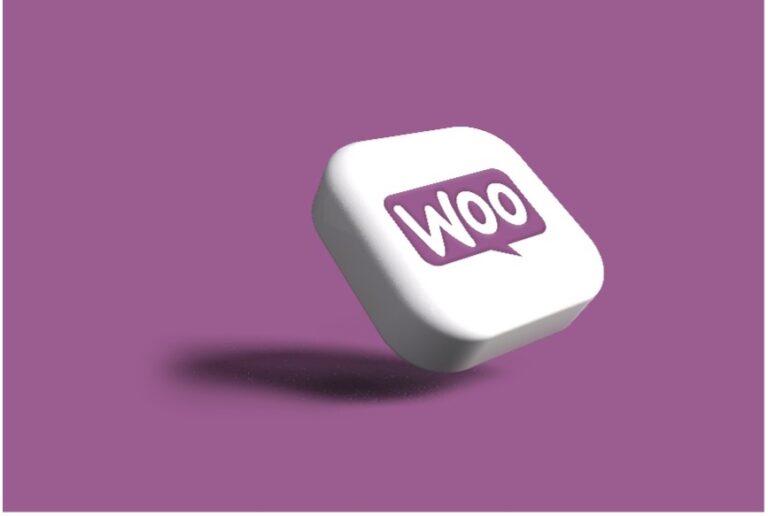The Beginner’s Guide to Ecommerce Marketing in 2022

What is Ecommerce Marketing?
Ecommerce marketing refers to using promotional tactics to engage traffic to your online store and convert it into potential customers. Ecommerce marketing strategies are influenced by marketing channels, audience, value propositions, and other aspects of the digital marketing mix.
Setting up an online eCommerce store for your business has never been easier, thanks to eCommerce such as Shopify and WooCommerce.
Anyone can open an eCommerce store without difficulty promoting their business online. Ecommerce stores have massively increased, and sales are predicted to double from the pre-COVID era, reaching almost seven billion globally by 2025.
Everyone wants to capitalize on the potential and expand their eCommerce business. But there’s so much information about eCommerce that it’s easy to get confused about which marketing strategies to use and which to not.
Store owners have difficulty gathering potential customers’ attention and focusing their marketing strategies on targeting the right customers. If your eCommerce brand struggles with bringing sales, digital marketing, improving customer relations, or any other problem, this guide is great for you.
Marketing Guide for Shopify
In 2020, Shopify reported that its customers contributed more than three hundred billion to the global economy. If you are a store owner in the Shopify ecosystem, you can utilize this guide to develop your brand for further success.
The guide mentions numerous Shopify marketing strategies and tips that can be a part of a detailed marketing plan to build awareness for your brand. Shopify marketing enables you to manage customer relationships.
So, if your store is struggling, you can use these marketing strategies to build a better reputation in the market. You can also use these marketing strategies to find new customers and ensure that your current customers return.
Let’s get into them.
1. Google Ads
You can use Google Ads for Shopify marketing in various ways. For instance, you can use ads to ensure your site appears at the top of the relevant searches. Your advertisement will be displayed when anyone searches the internet for your products.
Moreover, you can develop banner ads by using Google Ads’ display campaigns. You can choose from various sizes and run your ad at the top of the page or on a sidebar. But remember: It’s best to use mobile-friendly advertisements for better engagement.
Another significant feature of Google Ads is that it lets you engage your audience through metrics such as location, interest, browsing history, and many others. Your advertisement is placed on the website with audiences that complement your target market.
2. Email Marketing
Maintaining regular contact with the people on your email list between store visits is an effective strategy.
Regular email campaigns create a strong bond with your customers. And many customers become a part of your email list for receiving coupons and getting informed of future sales.
You can break your list into several categories and create customized messages for various segments.
For instance, you can create a separate part for most recurring shoppers and send them “Thank you” emails to appreciate them for their business while offering them exclusive deals.
Plus, you can promote seasonal sales and discounted items through emails as a Shopify store owner. It would be even better if you remembered your users’ birthdays or other anniversary dates. You could send them discount codes on their special days.
3. Content Marketing
You are already creating and marketing content if you use social media platforms like Pinterest and Instagram to promote your Shopify store. But you can further create a blog, YouTube channel, or online magazine that can boost the growth of your brand.
For example, if you use Shopify to sell furniture, you can post videos or blogs regarding interior decorating tips on TikTok or YouTube. You can also add a blog to the company’s website illustrating photos of how different tables can be arranged in other rooms.
4. SMS Marketing
One of the most pivotal Shopify marketing strategies is through SMS or text messages. Lauren Pope mentions that around forty-nine million people chose SMS communication from different companies in his article.
Moreover, MarketingProfs found that text messages result in more customer engagement as compared to emails. However, SMS messages should be brief and include your store’s website links. They should also not be more than one hundred and sixty characters.
SMS advertisements are impactful for sending urgent information such as sales, inventory alerts, celebratory events, etc. To ensure that marketing through SMS is convenient, Shopify provides an app you can use to send SMS messages.

Marketing Guide for WooCommerce
WooCommerce is one of the best and most well-known eCommerce platforms. It lets you set up your brand store in minutes. With around fifty million downloads, WooCommerce dominates over twenty-eight of all online stores.
The guide to WooCommerce marketing includes several strategies that can help you to increase customer engagement and product sales. Here are a few easy-to-use methods that can be helpful for any WooCommerce store owner:
1. Engage in Referral Programs
Several companies work with referral programs. These programs are a way for your customer to get rewarded by referring friends, colleagues, and loved ones to your store.
The rewards given by these programs can be in the form of free products or cash, prompting customers to guide individualized leads to the growth of your brand.
2. Invest in Sponsored Posts
You have to invest in ads if you are the owner of any WooCommerce store. The sole aim or purpose of advertisements is to attract more customers and ensure business growth.
But the most practical approach to reaching a greater audience is through organic and sponsored posts.
Google Ads, Instagram Ads, and Facebook ads are some of the prominent options to engage a higher audience. After implementing these ads, you can analyze the results according to your advertisement’s return on investment (ROI).
3. Choose the Best Plugins
One of the most distinct aspects of WooCommerce is that you have access to a set of plugins you can choose from.
In simple terms, a plugin is similar to an app you can install, and the store is like your phone. The plugins are integrated into the store for a better and enhanced experience.
Does adding more plugins improve the overall experience? No, you should only add plugins that prove to be beneficial. Avoid adding redundant plugins, so they don’t confuse your customers.
It will help if you are looking for plugins that:
- Offer the option to leave product reviews
- Speed up sales
- Send emails when a customer cart is abandoned
- Assist you with search engine optimization (SEO) to rank higher in search results
- Give customers the option to collect rewards or points.
4. Plan a Solid Social Media Marketing Strategy
Social media accounts are an essential marketing tool nowadays. So, your WooCommerce store must have a solid social media marketing strategy to target a larger audience.
Before moving forward with the strategy, you must ask yourself a few questions. What is your target audience? What is the content that interests your audience?
It would help if you designed your strategy around your customers to make them feel they benefit from following you. You should use social media posts to add value to your customers’ lives while entertaining them.
Initially, you need to set goals for your social media strategy. So, developing and aligning your social media strategy with your company’s objectives should be your priority.
Some of the goals for a social media strategy you can take into account are:
- Increasing the awareness of your brand
- Developing a larger audience
- Increasing the engagement of your customers
- Increasing website traffic through promotional posts.
After identifying your goals, you must select appropriate platforms to help your WooCommerce store grow exponentially. You can use social media platforms like Facebook or Instagram to promote your store and generate leads while increasing traffic.
Carrying out a competitor analysis would also help increase growth because it will allow you to uncover the behavior of your competition and anticipate their moves, helping you stay one step ahead of your customers.
Social media allows you to promote your brand to reach millions of customers worldwide. Here are several easy and effective steps you can take to boost your WooCommerce store’s traffic and conversion rate:
- Create Instagram and Facebook event pages
- Brand celebratory events with hashtags
- Use paid promotions on social media platforms
- Respond to people’s posts and comments.

The Bottom Line
Ecommerce offers promising potential and provides an opportunity for millions of individuals to earn their living. However, a well-crafted marketing plan is needed to ensure eCommerce store owners can supplement their sales, increase their conversions, and improve their target audience.
A successful marketing plan includes paying attention to user experience, developing valuable content, consistently optimizing your website, and creating sponsored media campaigns.
So, as long as you have an organized and detail-oriented marketing plan, you are all set to achieve success in the eCommerce business.






Responses